Matador Network's Blog, page 544
January 10, 2022
How to make the most of your day at New York City’s Museum of Sex

Sex is the one and only way to perpetuate the existence of the human species and, whether we like it or not, it’s part of everyone life in a variety of ways. To break taboos associated with sex and bring sexuality into a positive light, David Gluck opened the Museum of Sex in New York City in 2002. The museum is dedicated to showcasing the full history of human sexuality, as well as its evolution and cultural significance. Whether you’re shy but curious or well-versed in the art of passion, the Museum of Sex in New York City is an eye-opening and fun experience for all.
The best times to visit the Museum of SexWhere to start your visit at the Museum of SexHow long should I budget to visit the Museum of Sex?A breakdown of the Museum of Sex’s first halfA breakdown of the Museum of Sex’s second half: Super FunlandTickets and hours of operation for NYC’s Museum of SexThe best times to visit the Museum of SexEntry to the Museum of Sex is timed to control crowd sizes so there’s no real difference in what time and date you pick. However, the museum does charge $3 more on weekends. The ticket website also lists certain times as “peak,” meaning that those are popular times. Peak times include all day on weekends, and the late afternoon and evening on weekdays. If the place being really empty matters, then going early or mid-afternoon on a weekday is your best bet.
Where to start your visit at the Museum of Sex?
Photo: Author
The museum is four floors in total, but there are two sides to it. The first side consists of the typical museum experience with galleries, artifacts, and lots of reading. The second side is called Super Funland and is billed as an erotic carnival with interactive elements like games and rides.
Visitors will have to go through the first side before they can venture into the second, but it’s better that way. You’ll learn first and then be able to play armed with that knowledge. The best way to experience each side is to go in the pre-labeled order. Start on the second floor and continue going up and exploring each floor. Once you’ve reached the top of the first side, cross over to the entrance of Super Funland. After that, make your way down floor by floor.
How long should I budget to visit the Museum of Sex?The amount of time you should allot is dependent on how much you want to read. The first side of the museum provides a lot in terms of visuals, but they’re all accompanied by small plaque cards with information. We highly recommend taking the time to go through and read everything so you leave having learned something new and perhaps gained a different perspective on sex. If you do that and take part in everything at Super Funland, the whole experience should take around two hours.
A breakdown of the Museum of Sex’s first halfArtifact [xxx]: Selection from Secret Collections
Photo: Author
The first gallery visitors will encounter is a collection of objects that tell the history of sex and its relevancy through various cultures, revealing narratives and other surprising facts that people wouldn’t normally know. For example, chastity belts were never actually used in medieval times but now serve as an option for BDSM play.
Dominating the center of the room is a replica of a contraption used by King Edward VII to have sex in different ways with multiple people all the while putting in minimal effort himself. Other objects featured range from gynecological tools to sex toys.
Reclaiming & Making: Art, Desire, Violence
Photo: Author
The third floor features an exhibition dedicated to addressing sexual violence. As sex and violence share a complex history, the museum aims to spark dialogue and promote a safer, more liberated sexual culture. It asks visitors to “bear witness both to the reality and history of sexual trauma, and to the resiliency, agency, and healing power that survivors of such trauma manifest.” To this end, many of the information cards have italicized questions addressed to museum-goers to provoke introspective thought.
The works on display are from fourteen international artists, all of whom have experienced sexual violence. They range from photos of protests to abstract portraits to video interviews. One of the most powerful works from this exhibition is the series of silhouetted portraits by Aida Silvestri. As a survivor of female gential mutilation (FGM) herself, Silvestri interviewed other survivors and then created potraits that depict the types of FGM they experienced. Accompanying each portrait is what Silvestri calls ‘poems’ of the women’s stories.
Porno Chic to Sex Positivity
Photo: author
Sex has made its way, subtly or otherwise, into most forms of media we consume, and the museum takes a deeper look at how in the last exhibit. “Porno Chic to Sex Positivty” follows the history of pornography in fine art, advertising, films, and music through the use of media from the 1960s to the present day. The exhibit is divided into four sections: “A Pornographic Avante-Garde”; “Sexualized Marketing”; “Scandalous Scenes of Cinema”; and “Music: an Erotic Form.” You’ll see everything from famous cologne ads to scenes from Fifty Shades of Grey.
A breakdown of the Museum of Sex’s second half: Super FunlandSuper Funland: Journey into the Erotic Carnival
Photo: author
A hallway of carnival dioramas leads to a theater room where all are asked to watch a seven-minute film about the sexual history of the carnival. The film traces the bacchanalian origins of the carnival from ancient civilizations to the 20th century.
After the visioning, visitors head down to the third floor, Lucky Land. This is where you can play a number of games, such as the Love & Lust Deity Derby which is similar to a balloon blast game where you shoot water and something behind the target moves, racing against other participants. There are claw games, a RuPaul-led fortune telling machine, and a 4D-ride into the tunnel of love. Lucky Land is also home to a breast-themed bouncy castle.
The second floor, the Pink Palace, is aptly named as almost everything is in shades of pink, red, or purple. The attractions here are a slide that goes from the second to first floors, a biometric makeout challenge (which is now altered to measure holding hands), a whack-a-mole type game, and a mechanical bull ride.
The last floor, the Lollipop Lounge, is home to the carnival bar and concession stand. At the moment it’s closed due to COVID-19 precautions, but on a regular day you can chill out there with a drink or snack in hand. The lounge has a pole star dance stage where you can pose and take fun photos to music.
Tickets and hours of operation for NYC’s Museum of SexThe Museum of Sex is open every day of the week with varying hours. From Monday to Thursday, it’s open from 1:00 PM to 10:00 PM. On Fridays, it’s open from 1:00 PM to 12:00 AM. Saturday’s hours are 12:00 PM to 12:00 AM and Sunday’s are 12:00 PM to 10:00 PM. For days that close at 10:00 PM, the last entry is at 8:40 PM while 12:00 AM closers have their last entry at 10:00 PM.
Visitors have to be 18 or older to enter the museum (ID will be checked) and there’s no discount pricing for students. Generally tickets will cost anywhere between $60 to $65 depending on entry time, but the museum has had tickets on sale for $36 to $39. It’s recommended to buy tickets online in advance to secure your preferred time and date, but tickets are also sold on site. 
Here are this year’s national park free entry days (and other ways to visit parks for free)

Accessing national parks isn’t as easy as striding down the nearest path clad in hiking boots and sunscreen: annual pass fees range from $35 to $60 depending on the park, and even one-time visits are usually $20 to $35 per vehicle. Even though park fees go toward maintaining trails, paying staff, and protecting habitats and animals, the fees can still add up, and the cost of admission (and other associated park fees) is often given as a contributing factor to why park visitors are overwhelmingly white.
However, the National Park Service wants to offer everyone access to their public lands regardless of budget concerns. That’s why the Park Service announced five national park free entry days in 2022, giving everyone the chance to experience the majesty and grandeur of America’s national parks.
The following days will be national park free entry days:
Monday, January 17 – Martin Luther King, Jr. Day Saturday, April 16 – First day of National Park weekThursday, August 4 – Anniversary of the Great American Outdoors Act Saturday, September 24 – National Public Lands Day Friday, November 11 – Veterans Day“Whether on an entrance fee-free day or throughout the year, we encourage everyone to discover their national parks and the benefits that come from spending time outdoors,” National Park Service Director Chuck Sams said in a statement. “National parks are for everyone and we are committed to increasing access and providing opportunities for all to experience the sense of wonder, awe and refreshment that comes with a visit to these treasured landscapes and sites.”
While most people may think of national parks as being better suited to hikers, backpackers, campers, and other active adventurers, many parks have far more to offer. National parks protect historic sites, offer guided tours of massive caves for all ages, and usually have free family programs, lectures, and activities during the busy seasons. Some even have art classes and annual wildlife-watching events. You also don’t need to travel to a national park to take advantage of it, as all sites managed by the National Park System are free those days. You’ve got 423 to choose from, including national monuments, national historic sites, national recreation areas, and more.
Can’t make one of those five national park free entry days? No problem: you may be able to take advantage of one of these other free ways to enter a national park. Thanks to Every Kid Outdoors, fourth-graders and their families can get into hundreds of national parks for free for a year. Veterans and gold star families can always access America’s national parks for free, and seniors can get discounted annual national park passes. People with disabilities can receive annual national park passes for free, and volunteering at some park events, such as Yosemite Facelift (an annual effort to pick up trash around the park) will also get you a coupon for free entry into a federally managed site.
You could also consider visiting a federally managed site that isn’t a national park as those tend to be cheaper. For instance, the Lewis & Clark National Historical Park is just $10 per person and Isle Royale National Park is only $7 per person. And some of the most beautiful parks in the country, like North Cascades National Park and Great Basin National Park, are free year-round.
With so many ways to enjoy the parks at free or reduced rates, 2022 seems like a fantastic year to get out there and enjoy the beautiful outdoors. 
Give back to Hawaii and have the most memorable vacation ever

On your next trip to Hawaii, add one more word to your local vocabulary: mālama. Mālama means taking care of something, and it’s central to how Hawaiians relate to their beautiful islands. By embracing that idea and actually giving back on your next trip, we’re sure you’ll have the best Hawaii vacation you’ve ever had.
That’s because when you give back, you actually take the time to personally connect with a place. You learn more about it, spend time with others who are also working to make it better, and you feel fulfilled. You’ll also better understand the two other words that you may already be familiar with: mahalo and aloha.
Meaning more than just thank you, mahalo also means deep gratitude. Likewise, aloha is used as a greeting but refers to the breath of life and implies kindness and respect towards others. If it all sounds confusing, come to the islands, give back in one of the wonderful ways we describe here, and you’ll not only understand mālama and aloha –– you’ll bring the spirit of these ideas home with you. Here’s how you can do just that.
1. Take care of the beaches
Surfrider Foundation Maui Chapter
Hawaii’s diverse beaches — ranging from leafy, secluded coves to ultra-long stretches of pale, soft sand — are a top draw for most visitors. And you can do your part to keep them healthy, both on the shore and in the water. For one, use sunscreens that don’t harm coral reefs. If you aren’t sure which sunblocks are reef-safe, buy them in Hawaii, where only reef-safe sunscreen may be sold.
It goes without saying that you should dispose of any trash correctly. Note that includes cigarette butts, which are the most common single item of trash on Hawaii’s beaches and which are harmful to wildlife. But you could go one better and volunteer to maintain local beaches.
You’ll find plenty of opportunities to participate in beach cleanups, which occur on different mornings of the week, depending on the beach. Or help monitor marine debris so researchers can determine how best to deal with it. If you’re more of a gardening type, you could help preserve dunes in South Maui by removing invasive plants and planting native ones.
2. Hike safely
Photo: Shutterstock/Maridav
Hiking in Hawaii is a wonderful way to appreciate the beauty beyond the shores. But it’s critical to hike carefully and stay on trails since going off-trail can harm local plants and wildlife. If certain areas are closed off, there’s a reason for it. An area may need to recover ecologically, or it may be dangerous to hikers.
Many of Hawaii’s most popular trails hug mountainsides, offering a chance to both marvel at the mountains and the sea at the same time. But if you plan on hiking, be sure you have proper footwear and heed any signs to steer clear of certain areas. If conditions are muddy and you’re wearing flip flops, cliffside walks may be a bad idea. (Let’s hope this is not why flip flops are called “slippers” in Hawaii).
Staying safe is not just a good idea for yourself and the loved ones you are traveling with; it’s the right thing to do, so as not to tax the resources of Hawaii’s busy lifeguards and first responders.
3. Plant a tree
Photo: Hawaiian Legacy Reforestation Initiative/Facebook
Beyond native plants, you could plant native trees. The Hawaiian archipelago is home to spectacularly diverse ecosystems mere miles apart — including deserts, temperate forests, and lush jungles. You could learn more about these varied biomes and help restore some to their original state by planting trees.
Hawaiian Legacy is a reforestation initiative that plants native trees anew. You can book a tour with them, learn about Hawaii’s ancient forests and end the day by planting a tree of your own. On Maui, the Auwahi Forest Restoration Project is working to reintroduce the island’s tropical dry forests, which are its most threatened type of forest and which are home to dozens of native plants. While some beach clean-ups take only an hour, you’d be spending a whole day with Auwahi, hiking and planting.
Another organization, travel2change, recently partnered with Alaska Airlines to help visitors to the islands connect with the community and nature. This collaboration is a simple way you can find enriching, deeply educational, memorable, and fulfilling volunteer experiences in the local community.
4. Grow and eat Hawaiian foods
Volunteer at a farm that grows kalo, the Hawaiian word for taro, using ancient methods to harvest this important root from which poi is made. You can do this at a few farms across the island. Or simply go and learn about how taro is made, supporting the farm with your visit and taking the time to better understand the local culture. Also, you can support local growers by visiting farmers markets, one of the best things you can do on the islands. and you can find one on pretty much any day of the week somewhere on the island where you’re staying. Eating locally grown food doesn’t just support farmers; it’s a lot more sustainable overall.
5. Learn about the local culture
Photo: Deborah Kolb/Shutterstock
When you eat Hawaiian foods, especially ones as historically valued as poi, you’ll get a window into the local culture and feel more connected to Hawaii. There are plenty of other ways to learn more about Indigenous Hawaiian culture, from visiting museums that offer information about the life of Native Hawaiian before the arrival of Europeans or that celebrate the revival of Hawaiian culture since then. You can take classes on traditional arts like lei making or hula dancing. Perhaps take a few ukulele lessons or listen to Hawaiian music, or time your visit to take in a Hawaiian festival.
And of course, another way to learn about local culture is to learn the language. For example, āina means land — so “mālama ʻāina” means taking care of the land, something you too can do when you come to the islands with the intention of giving back.
6. Stay in accommodation that also gives back
AC Hotel by Marriott Maui Wailea
Embodying mālama can also be done by seeking out accommodations that give back, and encourage their guests to do the same. AC Hotel by Marriott Maui Wailea is a perfect example of this. This gorgeous hotel goes out of its way to use local artists for their lobby decor and source locally-made and grown foods. With their “Mālama package” guests staying a minimum of five-nights receive 20 percent off or one night free when they participate in any voluntourism activity on the island of Maui. This can include beach clean ups, removing invasive plants, or volunteering at a local non-profit. Mālama is easy to participate in and will turn your vacation into an unforgettable experience. 
January 7, 2022
A Japanese city turned unused buses into moving saunas complete with a wood stove steamer

From gondolas in Finland to a giant barrel on wheels in San Francisco, companies around the world are finding untraditional places for a sauna. And starting in February, it’s about to get hot and steamy in some Japanese buses.
In the Hyogo prefecture city of Himeji, Japan, a local bus operator has decided to transform some of its old city buses into a fully functioning sauna called SAUBUS. You’ve probably never thought about opening up your pores on what used to be public transportation. But in February, Shinki Bus will outfit the out-of-service fixtures and add wood stove steamers, new benches, and office space.
The old bus route in Himeji was something the locals took a lot of pride in. However, the company decided to repurpose the busses because of slowed tourism due to the pandemic. Even though the inside is completely transformed, the company is using some of the old features on the original vehicles. The buttons that were previously used to request a stop now release water onto the sauna stones to emit steam when pressed, and the leather rings will remain for customers to hang onto while taking in the mist. The area that used to be where the driver sat will double as a resting space to cool off from the steam and an office space if you’d like to complete some remote work in between sessions.
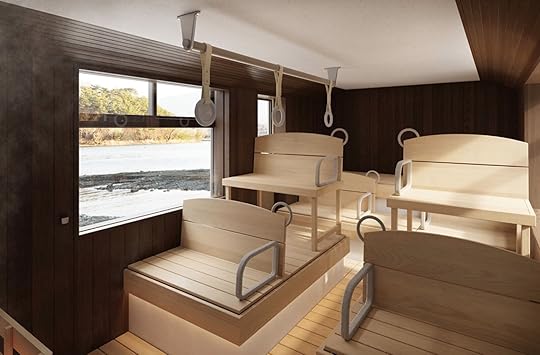
Photo: SABUS Japan
Guests can enjoy the onboard sauna while getting a ride to a pool that is soon to be set up, using water from a local lake, along with plans for restroom facilities as well. The company also plans to rent out the buses, particularly to people who have a place to store one like an outdoor space or a designated parking spot.
Which draws the question: Would you turn to one of these hotspots on wheels for your rest and relaxation? 
Every type of Japanese sex club and what you’ll find inside

Japan’s sex industry goes by the moniker mizu shobai (water trade), a term stemming from the bathhouses of Edo-period Japan (1603-1868) which were often haunts for sexual release as well as day-to-day ablutions.
Japan is no longer viewed as a nation of sexual permissiveness, but there are still many mizu shobai establishments across Tokyo and other major cities. Modern Japanese sex clubs run the gamut from Girls Bars which are flirtatious, to Soaplands and Image Clubs which feed more carnal and fetishistic desires.
Japanese sex clubs are typically exclusive affairs and are often unwelcoming to foreigners – though some Japanese language proficiency might help your case.
To find out more about Japan’s sex clubs and what you’ll find inside, check out our guide below.
1. Soaplands, AKA soapy soapy houses
Photo: Kabardins photo/Shutterstock
A piece of 1956 legal legislature officially outlawed prostitution in Japan, but a host of liberal interpretations of the law have led to an abundance of alternative options.
Among the most popular alternatives are Soaplands, which are brothels in all but name. Soaplands present themselves as private bathhouses, where visitors can pay for a soapy massage, not unlike in a Turkish bathhouse, but with a little less physical battering involved and little more sexual pleasure.
An ordinary Soapland visit goes as follows: The client will undress for one or two hostesses, most likely garbed in provocative clothing, who then bathe said client in soapy water. An array of lotions, bubble baths, and lubricants are used, and in certain scenarios, the women will strip down and rub their bodies on the customer using their own skin as a sponge. This generally culminates in a garden-variety sex act, the type of which is determined by the client’s budget.
Soaplands/soapy soapy houses in Tokyo:King’s Club: 4-23-5 Senzoku, Taito-ku, Tokyo Barubola: 1-24-3 Kabukicho, Shinjuku-ku, TokyoYou can also check out this extensive Soapland directory.
2. Girls Bars, AKA Hostess ClubsGirls Bars, also known as Hostess Clubs, are Japan’s most ubiquitous type of mizu shobai establishment. Typically the preserve of older Japanese men, girls bars are staffed by scantily clad waitresses who pour patrons drinks, light their cigarettes, and keep the conversation flowing, dropping the odd suggestive comment. The more the customer pays (often upwards of $100) the longer the hostess will keep them entertained.
Sex is not part of the trade at Girls Bars, though many hostesses are encouraged to go on extracurricular sojourns with regulars (if invited) in order to maintain their business — what happens on said sojourns is at the discretion of those involved.
Girls Bars/Hostess Clubs in TokyoRoppongi Club Chick: 3-8-18 Roppongi, Minato-ku, TokyoClub Lalah Roppongi: 3-13-14 Roppongi, Minato-ku, Tokyo3. Boys BarsBoys Bars, or Host Clubs, are the male equivalent of Girls Bars, typically staffed by young, attractive men with perfectly coiffed anime-esque hairstyles. Conceptually, they are similar to Girls Bars, though the hosts will often circulate between tables at the ring of a bell until the customers are asked to choose which host they favor for future visits. Upon making this decision, out-of-club visits are encouraged, which often leads to sex.
There are also gay host clubs in Japan which function in the same way as their heterosexual conuterparts.
Boys Bars in Tokyo:Club Platina: 3-3 Shinjuku, Shinjuku-ku, TokyoKing of College (Gay Host Club): 2-14-5 Shinjuku, Shinjuku-ku, Tokyo 4. Image Clubs
Photo: DKai/Shutterstock
Image Clubs, or imekura, are another common type of Japanese sex club. Image clubs are essentially brothels, where young women in costumes are groped and penetrated with sex toys by a paying customer. Following the experience, the customer may also request to take the woman’s underwear home.
Imekura are among the most expensive sex clubs in Japan, with more elaborate experiences costing several hundred dollars. For this price, the customer and the host will usually engage in role-play scenarios, which take place in private cubicles designed like train carriages, classrooms, police stations, and more.
Image Clubs in Tokyo: Gotanda Uniform Heaven: 1-20-4 Higashi Gomonda, Shinagawa-ku, TokyoOrchid: 2-40-4 Ikebukuro, Toshima-ku, Tokyo5. Pink SalonsPink salons are fellatio bars, sometimes going by the more direct name “suck shops”. Though pink salons are officially registered as Hostess Clubs to bypass the official anti-prostitution legislature, their interior design and half-naked customers clearly indicate that there’s more than conversation on the menu.
In pink salons, male customers pay for a time slot in a cubicle — not always entirely private — in which one or several women will pleasure them to climax. Some other “touching” services may be offered to bring about the climax more quickly, though penetrative sex is forbidden. Many of the women in pink salons will receive hundreds of customers a month, and hygiene is said to be quite poor in those establishments, possibly leading to sexually transmitted diseases.
Pink Salons in Tokyo: Happy Hinomaru: 2-36-3 Kabukicho, Shinjuku-ku, TokyoGotanda Pinsaro Dio: 1-16-2 Higashigotanda, Shinagawa-ku, Tokyo 6. Oppai PubsOppai Pubs, meaning Breast Pubs, are for Japanese sex clubs customers with a penchant for fondling and sexual harassment. Considered a type of sekukyaba, or sexy cabaret establishment, Oppai Pubs are like Hostess Clubs where some touching is permitted.
How much touching is, however, a bit of a gray area, and at the discretion of the woman and/or pub in question. With that in mind, Japanese language ability is highly recommended. Hostesses also don’t tend to linger at any given table for more than about 15 minutes, unless the customer is willing to pay extra.
Oppai pubs in Tokyo: Club Slow: 1-9-6 Kabukicho, Shinjuku-ku, TokyoSuper Angel: 1-6-8 Kabukicho, Shunjuku-ku, Tokyo7. Doll ClubsDoll Clubs are another way for club proprietors to get around the Prostitution Prevention Act, while offering sex-based services and also bypassing many of the moral conundrums that come with renting a real person for sexual intercourse.
In Doll Clubs, customers usually pay for a time slot in a private room with a doll of their choice. Customers can choose the face, hair, and clothing to align with their individual fantasies, and in some cases, interchangeable vaginas are available as per customer specifications.
Japanese love dolls are incredibly life-like, and weigh about the same as a real person; the price for a session with a doll is also equivalent to that of a living, breathing human. Customers should note that love dolls are worth thousands of dollars and any damage caused may result in an empty wallet.
Doll clubs in Tokyo:Love Doll Directory contains an extensive list of doll clubs and rental facilities.
8. BDSM Clubs
Photo: Kalcutta/Shutterstock
Japanese sex clubs specializing in BDSM are often open to foreigners and people of varying sexual persuasions, unlike other mizu shobai establishments which are largely meant for straight, Japanese men. BDSM club sessions also vary wildly in price – upwards of $1,000 in some cases.
Most of Japan’s BDSM clubs are entirely above board, forbidding the happy-ending-type services commonplace in other Japanese sex clubs. That said, in some rare cases the customer is allowed to be the dominator with sex acts permitted. Some clubs also host BDSM and shibari, or rope bondage, shows.
BDSM clubs in Tokyo:La Siora: 5-18 Shinjuku, Shinjuku-ku, Tokyo Sweet Devil: 2-8-3 Higashi-Azabu, Minato-ku, Tokyo (given location is of the love hotel used for BDSM sessions near the club’s office)Blackheart (fetish shows): 6-3-16 Ginza, Chuo-ku, Tokyo9. Happening BarsHappening Bars are Japan’s version of swingers clubs, which have more or less the look of standard bars but with separate (and sometimes private) rooms in the event that any sexual happenings may occur. Costumes, whips, props, and sex toys are usually available for customers to use in each establishment’s “play areas”.
Japanese Happening Bars are usually veiled in secrecy (at least on their exteriors), and foreigners and single men may struggle to gain entry unless they have membership at the club or attend with a regular. Couples and women are generally more welcomed and are excused from the hundred-dollar-plus entry fees.
Example of Happening Bar in Tokyo:Bliss Out: 1-10-1 Kabukicho, Shinjuku-ku, Tokyo 
Help the Joshua tree gain protection under the Endangered Species Act

This is The Climate Win, the most positive sustainability news around the world every week.
CALIFORNIA’S FAMED JOSHUA trees are in serious danger. Studies show that threats from residential development, wildfires fueled by invasive grasses, and other serious climate impacts could render the tree that inspired Joshua Tree National Park nearly extinct by 2100. Now, a major effort led by non-profit environmental group WildEarth Guardians has scored a major victory in an effort to gain the protection that comes with listing Joshua trees as “threatened” under the Endangered Species Act (ESA).
The effort is seeing progress. A federal court in California recently ruled that the US Fish and Wildlife Service (US FWS) broke the law when it failed to list the Joshua tree as a threatened species in August 2019, though WildEarth Guardians had sought protection for the trees as far back as 2015. Though the ESA operates under the purview of Fish and Wildlife and more commonly protects endangered wild animals, plant species are considered in certain circumstances deemed highly warranted.
“The Court’s decision represents a monumental step forward for the Joshua tree, but also for all climate-imperiled species whose fate relies upon the [Fish and Wildlife] Service following the law and evaluating the best scientific data available with respect to forecasting future climate change impacts,” said Jennifer Schwartz, WildEarth Guardians’ lead attorney on the case, in a press release.
The court found that scientific evidence had been overlooked in the original ruling, and thus the 2019 decision to not list the Joshua Tree is moot. Protections for the tree will be reconsidered. If the effort is successful, which WildEarth thinks it will be, the federal government will be legally obligated to help the Joshua tree adapt to climate change and ensure its survival in its natural habitats. The court’s decision is also significant as it sets a precedent for scientific evidence overturning a high-stakes legal decision.
“For the sake of the Joshua tree and the overwhelming majority of the public who believe in conservation, science, and protection of species and habitat, we are optimistic that the Service will use this opportunity to quickly issue a decision to protect the Joshua tree,” said Schwartz. “Our climate-imperiled species — plants and animals alike — do not have time for political gamesmanship that questions unambiguous science. Now is the time for action to preserve what we can of the natural world before it is too late.”
You can help this effort succeed by emailing the Department of the Interior to request protection for the Joshua tree. This auto-send form takes only a few seconds to fill out and confirms that there is indeed interest in protecting one of America’s most unique natural assets.
More climate wins this weekSolar-powered cars are coming. According to a report in Freethink, self-sustaining cars powered by the sun are in development from brands including California’s Aptera. While it’s unlikely a fully solar vehicle would be very useful, the technology could couple with battery-powered cars to offer a hybrid system to extend mileage and decrease dependency on the electric grid.
Also on the solar-power front, the common solar panel could become far more efficient in the near future. The photovoltaic silicon cells used in most rooftop and commercial solar panels convert about 15 to 20 percent of the energy that hits them into power. But a new cell made of perovskite could double that efficiency and vastly improve the power generation in the rising solar sector. The Colorado Sun reported this week on studies underway in Golden, Colorado, by the National Renewable Energy Laboratory that seek to test perovskite cells’ durability and viability for solar panels. If as successful as expected, rooftop solar panels could become even more popular than it is today.

Photo: Ford Motor Company
Finally, some good news for eco-conscious car buyers: Ford has doubled production of its Lightning F-150, the motor company’s forthcoming electric version of its best-selling pickup truck, due to excessive demand, Bloomberg reported. The automaker will start taking orders from customers this month and plans to produce 150,000 Lightning F-150s per year. This is a major climate win because it confirms interest in an electric version of one of America’s best-selling auto models and will force its competitors to step up their game — which will eventually drive prices way down for the average consumer. Would you drive an electric F-150? 
Book these Mardi Gras Airbnbs near the action

Mardi Gras 2022 begins Tuesday, March 1. Anyone and everyone looking for a wild time has come to the right place. But the big kicker of this New Orleans tradition is, “where are you going to stay?” Looking for a place that is going to put you right in the middle of everything — but with enough privacy to step away when you need a break — is key. These New Orleans Airbnbs near Mardi Gras fit the bill perfectly.
We hope you love the Mardi Gras Airbnbs we recommend! Just so you know, Matador may collect a small commission from the links on this page if you decide to book a stay. Listed prices are accurate as of the time of publication. See our full Advertiser Disclosure here.
1. Mardi Gras Mansion near St. Charles parade route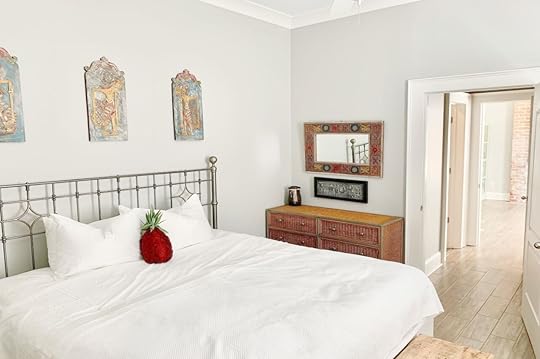
Photo: Airbnb

Photo: Airbnb

Photo: Airbnb
Welcome to the Mardi Gras Mansion. Just a few feet away from the infamous St. Charles parade route, guests will surely be right in the action at this home. The home is spacious and has a private side entrance and a porch on which to sit and pregame, people watch, and have a cup of coffee in the mornings. The two-bedroom cottage was recently renovated with a fully equipped kitchen, two bedrooms, and a living room area. Mardi Gras Mansion is within walking distance of many local attractions and restaurants.
Four guests, two bedrooms
Price: $275 per night

Photo: Airbnb

Photo: Airbnb

Photo: Airbnb

Photo: Airbnb
This historic 1898 recently renovated home was remolded with a contemporary New Orleans feel. The home features 12’ ceilings, a private entry, and a private back porch with a beautiful tropical garden view. Guests can walk or bike to Audubon Park and Zoo or browse local boutiques, antique shops, or restaurants.
Four guests, two bedrooms
Price: $145 per night

Photo: Airbnb

Photo: Airbnb

Photo: Airbnb

Photo: Airbnb
This classic New Orleans Shotgun-style house was built circa 1940 and renovated in 2018. The Mardi Gras Airbnb is situated in a quiet neighborhood and has a front porch swing where guests can sit and enjoy the cool New Orleans spring weather or a morning cup of coffee. Guests can also walk, bike, or catch a streetcar around the city, including to the Mardi Gras festivities.
Six guests, two bedrooms
Price: $85 per night

Photo: Airbnb

Photo: Airbnb
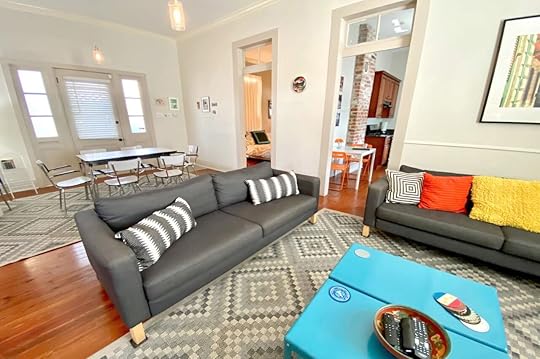
Photo: Airbnb

Photo: Airbnb
You’ll definitely get into the Mardi Gras spirit just by looking at this three-bedroom home. The three-bedroom home is located in Uptown and is an excellent base for exploring New Orleans. The house is packed with many amenities like WiFi, a monitored security system, a fully equipped kitchen, and more. The home is just two blocks from the start of many Mardi Gras parades, two blocks to Tipitina’s, and four blocks from Magazine Stree with many pubs and restaurants.
Six guests, three bedrooms
Price: $185 per night

Photo: Airbnb

Photo: Airbnb

Photo: Airbnb

Photo: Airbnb
This artsy, multicolored jazzy residence is truly a part of the Mardi Gras magic, and guests will feel like they are on another dimension. The six-bedroom home is the perfect base for families or groups coming down for Mardi Gras. There is a fully equipped kitchen with an island fit for six guests and a spacious dining area with murals inspired by Uptown Mardi Gras. There is an outdoor space with a heated pool, in-pool loungers, cabana, hot tub, and outdoor kitchen.
Fourteen guests, six bedrooms
Price: $474 per night

Photo: Airbnb
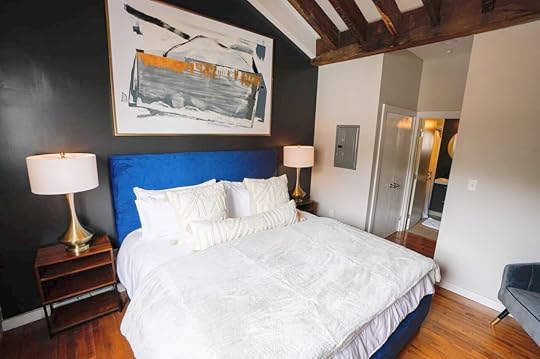
Photo: Airbnb

Photo: Airbnb

Photo: Airbnb
Introducing New Orleans’s freshest centrally located apartment. This home is filled with an artsy vibe with many paintings and murals found throughout the apartment. The classic Mardi Gras Airbnb features a fully stocked kitchen, a spacious living room with a brick interior, and a decorative pink wall. There is also a decorative garden-like courtyard with artwork all around. The apartment is within walking distance to many local attractions like Turkey and the Wolf, Stein’s Deli, District Donuts, Juan’s Flying Burrito, and The Tasting Room.
Two guests, one bedroom
Price: $199 per night

Photo: Airbnb

Photo: Airbnb

Photo: Airbnb
This private studio suite is perfect for couples or singles on a New Orleans Mardi Gras getaway. The studio has a private entrance and a kitchenette, a bedroom, and a full bathroom. The studio is just a block away from N. Rampart Streetcar and Frenchman Street and a short walk to the French Quarter.
Two guests, one bedroom
Price: $101 per night

Photo: Airbnb
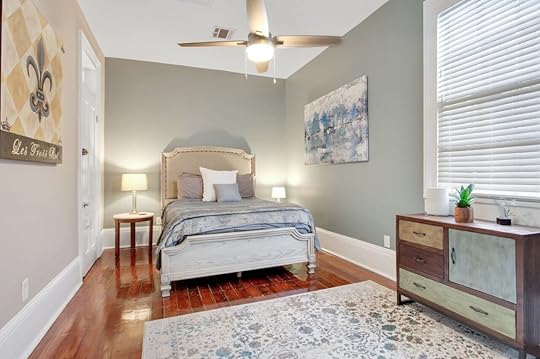
Photo: Airbnb

Photo: Airbnb

Photo: Airbnb
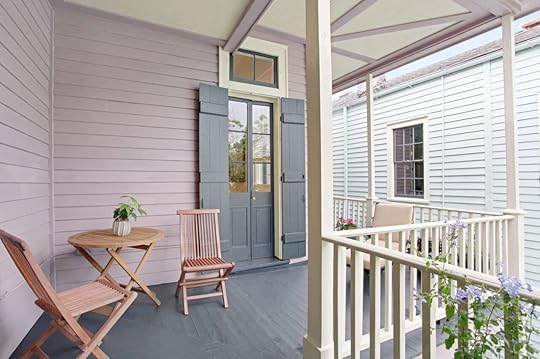
Photo: Airbnb
Another historic mid-1800’s Victorian home was renovated into a modern, spacious apartment and is located in one of New Orleans’ most historic neighborhoods, Faubourg Treme. There are still historical features such as original french doors, wood floors, and high ceilings. The apartment features a full kitchen, bedroom, and living room with a sleeper sofa.
Three guests, one bedroom
Price: $136 per night

Photo: Airbnb

Photo: Airbnb

Photo: Airbnb
This spacious modern apartment is just four blocks from Mardi Gras World and a 20-minute drive from New Orleans International Airport. The apartment features a fully equipped kitchen and a dining area. The master bedroom has a king bed and an open living room with a sleeper couch. The apartment is within walking distance to the National WWII Museum and a 15-minute walk from the French Quarter and other attractions.
Four guests, one bedroom
Price: $113 per night
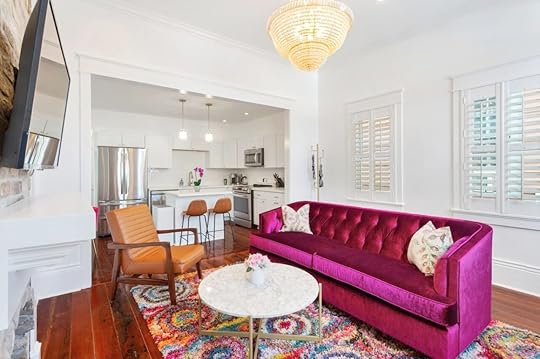
Photo: Airbnb

Photo: Airbnb
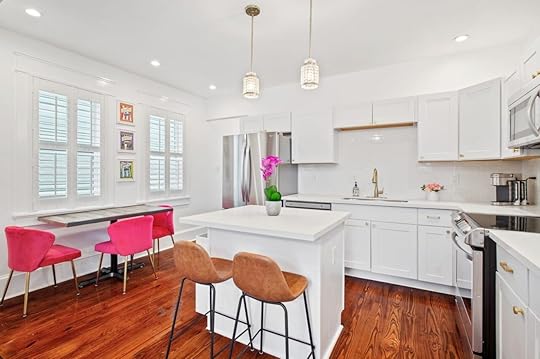
Photo: Airbnb

Photo: Airbnb
This stylish and vibrant suite still has historic touches but is renovated with high-end amenities. The home has a fully equipped kitchen and a living room with a historic fireplace, vintage chandelier, and bookend shelving. Each bedroom is decorated with a stylish and bright interior and other New Orleans-themed artwork. There is also an outside seating area with string lights perfect for a night of relaxing after a long day.
Six guests, three bedrooms
Price: $203 per night

Photo: Airbnb
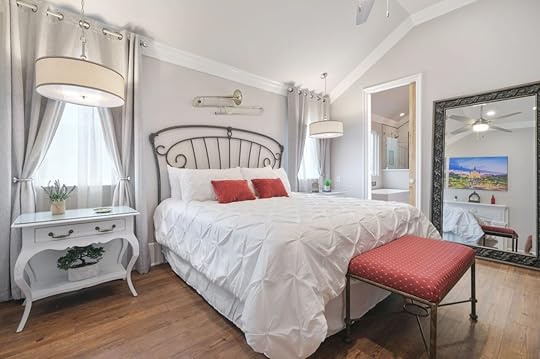
Photo: Airbnb

Photo: Airbnb
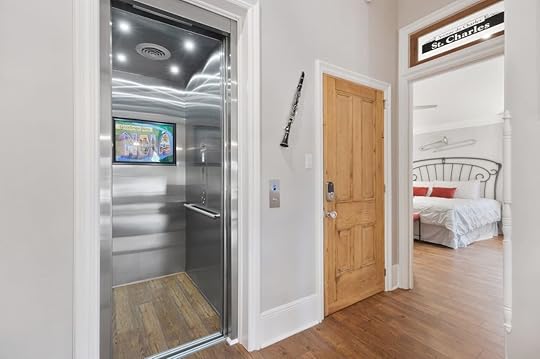
Photo: Airbnb
Based in a safe and walkable neighborhood is a good way to spend Mardi Gras. Here to meet that need is this historical building with a third-floor penthouse. The third-floor penthouse is over a juice and smoothie bar but has private elevator access for guests. The building is right on Magazine Street near many restaurants, coffee shops, spas, boutiques.
Four guests, two bedrooms
Price: $379 per night

Photo: Airbnb
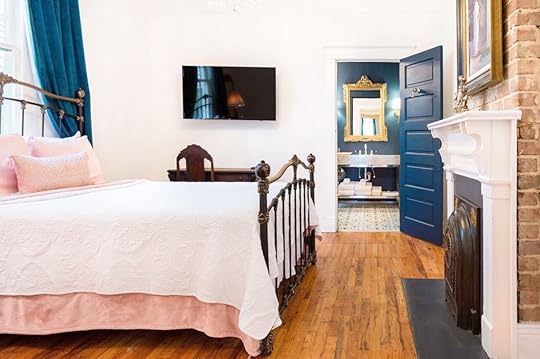
Photo: Airbnb

Photo: Airbnb

Photo: Airbnb

Photo: Airbnb
Guests will truly feel like royalty staying at this elegant home with luxurious decor and traditional finishings. There is a full kitchen with an attached living room and a historic fireplace in the center of the living room. There are two full bathrooms, one with a vintage theme and the other modern themed, and the master bedroom also has a fireplace. There is also a spacious front porch and backyard courtyard to enjoy coffee or a glass of wine. 
Four guests, two bedrooms
Price: $113 per night
The 7 most fabulous vacation destinations for LGBTQ travelers in 2022

After nearly two years where LGBTQ travelers made peace with expecting the unexpected, it’s time to change the narrative by queering the adage. What if expecting the unexpected means discovering places far from gay travel destinations like Puerto Vallarta, Mykonos, or NYC and leaning into the unknown?
What if travel in 2022 is about becoming a modern Magellan by steering clear of the well-trod path?
LGBTQ travelers tend to stick to LGBTQ-friendly locations — and for good reasons. Visiting destinations known for queer inclusivity can be safe, relaxing, and liberating. But this year, consider breaking with tradition. Many parts of the world are becoming increasingly accepting of the LGBTQ community. Opting to visit some of these less-frequented locales often means lower prices, fewer tourists, more opportunities for authentic local experiences, and the chance of becoming a true LGBTQ trendsetter.
As countries continue opening borders to visitors, consider the world your rainbow-colored oyster. Take advantage of its spoils by putting one of these seven surprising gay travel destinations on your gaydar for 2022.
We hope you love the spaces and stays we recommend! Just so you know, Matador may collect a small commission from the links on this page if you decide to book a stay. Listed prices are accurate as of the time of publication. See our full Advertiser Disclosure here.
1. Zipolite, MexicoThe bohemian beach destination no one told you about
Photo: Visita Zipolite/Facebook
Sail south of Puerto Vallarta’s resort-packed streets, and you’ll eventually land on the banks of Zipolite — Oaxaca’s best-kept LGBTQ secret. This beachfront bohemia is a far cry from the bustling resorts that colonize the country’s most famous destinations. It’s also a literal beach-bum oasis: Playa Zipolite is Mexico’s only legal nude beach — a mile-long expanse where gray-haired hippies bake their precious jewels on the glitter-gold shoreline.
The town’s anything-goes attitude toward swimwear extends to LGBTQ life. Playa del Amor, the gay beach, attracts a diversity of visitors; it’s not uncommon to see groups of gay men and older straight couples sharing the shade under thatched-roof palapas. ChiZme, Zipolite’s inaugural gay bar (which opened in 2018), is an all-are-welcome watering hole. Even Demetria, a gay beach bar, enjoys the company of a mixed crowd. It’s easy to see why – the outdoor seating knows no prejudice when it’s time to soak up the sunset.
A trip to Zipolite is a non-stop siesta – a way of life supported by the region’s spotty cell service. Be it clothes or connectivity, a vacation to this haven is about shedding the world’s worries and enjoying what this untouched coastline offers in abundance: sun, sand, and a chance to unwind.
Where to stayNo shirt, no shoes, no problem — that’s what you’ll find at “hetero-friendly” Casa Nudista, an LGBTQ hotel where guests can toss their pants off upon stepping inside. Guests stay in refreshingly bare-bones bungalows and have access to an on-site pool and cafe. Even if you don’t stay here, stop by for a visit — it’s only a two-minute stroll from the beach. A day pass gives guests access to the hotel’s shared amenities. On Saturdays, a nude pool party kicks off in the late afternoon.
2. Park City, UtahThe adventurous gay ski getaway
Photo: Sean Pavone/Shutterstock
If cities were drag artists, Park City would be a Drag Race winner. This tiny Utah town tucked into the dramatic Wasatch Mountains is the ultimate shape-shifter. In January, it dolls up like Hollywood-in-miniature for the Sundance Film Festival. In February, it transforms into a queer circuit club for the annual gay ski week Elevation Utah. The city dresses in rainbows to celebrate in June, and though the rest of the year isn’t decidedly queer, Park City always welcomes a colorful mix of visitors who inject this rural enclave with progressive values.
Park City’s proximity to Salt Lake City is an added bonus. Located thirty minutes away by car, SLC boasts more LGBTQ residents per capita than uber-queer Los Angeles; LGBTQ politicians in city council outnumber straight officials by six to four. Of course, visitors will still find conservative pockets in other parts of Utah, but even those seem to be slowly changing their attitude toward queer life: in 2021, the state voted to recognize June as LGBTQ month.
For the quintessential Park City experience, visit in winter, when the snow-covered acropolis attracts a global roster of LGBTQ skiers. After last year’s hiatus, Elevation Utah will come roaring back to the mountains from February 23-27 with outdoor adventures and indoor dance parties to celebrate the gay-led organization’s 20th anniversary.
If hitting the slopes sounds unappealing, consider a trip in summer or fall. Park City is an ideal home base for outdoor enthusiasts interested in hiking craggy peaks and wild woodlands just outside of town.
Where to stayPark City Peaks Hotel, the official host hotel for Elevation Utah, is a midcentury-modern boutique retreat with easy access to the town’s top sites. A free local bus stops in front of the hotel and shuttles guests to the ski resorts and downtown.
3. Belgrade, SerbiaThe Pride celebration that serves a greater purpose
Photo: e2dan/Shutterstock
In September 2022, Belgrade will host EuroPride — an exciting development for a city with a tumultuous queer history.
“The first Pride was a protest” may be a slogan honoring Marsha P. Johnson-era America, but it’s a modern memory in Belgrade. When the Serbian city held its first Pride march in 2001, it ended in violent clashes incited by right-wing extremists. The march returned in 2010 and was met with extremists who threw Molotov cocktails and shot rubber bullets. But in the past decade, LGBTQ life has improved significantly, and this year’s Pride gathering is a sign of the city’s growth.
Considering Serbia’s tenuous relationship with the rainbow flag, there are a surprising amount of LGBTQ haunts in Belgrade. Smiley, a cozy queer bar, serves coffee by day and cocktails by night. Musk Machine is a swanky gay nightclub open on weekends. Many of the bars around the Cetinjska district cater to queer-friendly crowds, and the nudist section of Savka Lake Beach attracts an LGBTQ crew.
What makes Belgrade a worthy LGBTQ destination isn’t its all-are-welcome energy but its gritty mash-up of old and new. There’s Hapsburg-era architecture next door to post-war modernist structures. Orthodox grandmothers from communist Yugoslavia share dinner tables with a generation raised with a lesbian Prime Minister. Like the Danube and Sava Rivers, culture here clashes head first and at the city’s heart. In this turning tide, Belgrade is finding its queer footing in a manner both messy and mesmerizing.
Where to stayDon’t let the humorless Bauhaus facade fool you — Square Nine’s Scandi-style interior feels like a warm hug. It might be hard to leave the embrace of the gezellig suites, but getting stuck inside would be a shame. The hotel is only a short stroll away from Belgrade’s trendiest pedestrian strip and some of the best LGBTQ bars in the Balkans.
4. Baltimore, MarylandAmerica’s queerest up-and-coming city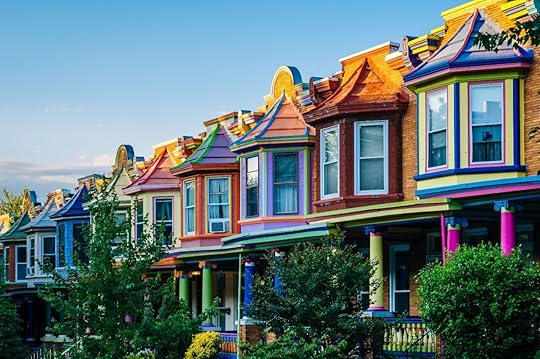
Photo: Jon Bilous/Shutterstock
Baltimore often gets overlooked as elegant Washington DC’s scrappy little sister, but it’s not called Charm City for lack of appeal. Quirky, artsy, and seriously stylish — this once-trusted industrial town is polished to become one the coolest destinations on America’s East Coast.
The city’s wonders might be news for many travelers, but they’re old hat for LGBTQ residents. Baltimore is where gay filmmaker John Waters and drag diva Divine got their start in the 1960s. Leon’s — a gay leather bar — started slinging drinks in 1957 and never stopped. Mount Vernon, a historic district adorned with 19th-century architecture, has been the town’s de facto gayborhood for decades, and queer locals have been celebrating the art of drag since at least the 1930s. According to data from the American Community Survey released in 2021, Baltimore currently has a higher percentage of same-sex married households than LGBTQ hotspots like NYC, Los Angeles, and its next-door neighbor, DC.
The divey Drinkery, recently-opened Central Bar, and friendly Rowan Tree are a few of Baltimore’s best local gay bars. Gertrude’s, a gay-run eatery renowned for their Chesapeake Bay crab, is a must for local cuisine. An annual Pride parade takes place every June, and Black Pride takes place in September. But a trip to Maryland’s biggest metropole shouldn’t only be focused on queer fun. Nosh on artisanal treats at Mount Vernon Marketplace, check out out-of-the-box art at the American Visionary Art Museum, and step inside the opulent Evergreen House to ogle Gilded Age artifacts. Baltimore is chockablock with treasures waiting to be uncovered.
Where to StayThe recently-renovated Hotel Revival, located in Baltimore’s LGBTQ-friendly Mount Vernon, offers colorful accommodations in a former private mansion built in 1929. Head to Topside, the hotel’s rooftop bar, for unmatched views of the nearby Washington Monument.
5. Quito, EcuadorA South American capital at the forefront of LGBTQ rights
Photo: f11photo/Shutterstock
Ecuador’s heavenly capital, perched 9,350 feet above sea level, is a city close to God. Church spires shoot into the sky like the nearby Pichincha Volcano. A reliable fog blankets the city around bedtime and flies away on angel wings in the morning. It’s hard not to consider the Catholic religion’s pivotal role in culture while walking through Old Town — the UNESCO World Heritage Site is filled with Spanish Colonial facades and dozens of places to worship. But this celestial metropolis isn’t stuck in old-school ideology. Quito boasts one of the most liberated LGBTQ communities in Latin America.
In 2019, Ecuador legalized same-sex marriage. As of 2016, Ecuadorians have the right to self-declare their gender identity on legal documents. The country is one of a handful in the world that outlaws conversion therapy, and the constitution grants equal rights to all regardless of sexual orientation or gender identity.
Quito is the country’s queer capital, and the Mariscal district, also known as the Zona Rosa, is its beating heart. This is where you’ll find El Hueco, a gay dance club that welcomes a mixed crowd. Further afield lies Kika, a slick gay spot that turns into an up-all-night Discoteca at 11:00 PM. La Disco Bitch is where queer 20-somethings groove to Latin pop. The city’s Pride festival takes place every June, and in November, Quito’s LGBT film festival celebrates the latest in queer cinema.
Most LGBTQ-centric offerings take place at night, leaving visitors time to explore Quito’s surrounding wilds during the day. Taking the Teleférico aerial tram up to Cruz Loma is a must: the viewing platform, located roughly 13,000 feet above sea level, overlooks Quito and its surrounding mountains. Cotopaxi National Park, home to the snow-capped Volcán Cotopaxi, is only an hour away and makes for a refreshing day trip. Travelers to the Galápagos Islands will likely fly through Quito on their way toward the Pacific Coast, and tacking on a few days to see the Ecuadorian Andes is a worthwhile detour before hitting the high seas.
Where to stayBook one of the kitschy-themed rooms at Ikala Quito Hotel, located in Zona Rosa, for its dash of local flavor. The decor in each suite draws parallels to what you’ll find in Ecuador – Ancient Incan history, colonial grandeur, tropical climes, and rugged mountains. Breakfast is included, so you can grab a meal before you hit the ground running.
6. MaltaThe world’s most progressive country for queer folks
Photo: Patryk Kosmider/Shutterstock
Malta might be one of Europe’s tiniest nations, but when it comes to LGBTQ rights, no country has taken bigger strides toward equality. According to the Spartacus Gay Travel Index from 2021, the only nation more queer-friendly than Malta is perpetually-kind Canada. Malta is a place where same-sex couples stroll hand-in-hand without worry and where gender identity is a non-issue.
The country’s inclusive attitude is a reflection of its hodge-podge culture. This pearl of an archipelago, located south of Sicily and surrounded by the cerulean Mediterranean, has attracted a lengthy list of conquerors who have all left their mark. Roman, Arab, Spanish, French, and British influences can be found in local architecture, language, art, cuisine, and customs. Valletta, the capital, welcomes visitors with its modern Renzo Piano-designed gate and pampers them inside Baroque sandstone townhouses and sun-drenched Italian palazzos. It takes only a few minutes to leave the big-city buzz for a countryside swept with wildflowers and scrubby pines. Deep-sea adventures and secret swimming holes await on the coastline, and the next great experience is always a short drive away.
The queer scene isn’t as large as a Meditteranean magnet like Mykonos, but it’s still mighty. Pembroke Beach, the unofficial gay seaside hang, is a fifteen-minute drive from Valletta, as is Michelangelo, Malta’s gay nightclub. Maori, a lesbian-owned bar adorned with quirky art, peers over the HMS Maori shipwreck off the Valletta coast. The Birdcage Lounge, a queer-friendly cocktail bar, hosts drag shows and kooky cabarets in the nearby village of Rabat. Lollipop, a house-and-disco dance party, throws queer-centric pop-up events once or twice a month.
Where to stayThe super-swanky Rosselli AX Privilege is a lux boutique hotel that pairs Valletta history with sleek modern amenities. Between the stylish suites, outdoor pool with panoramic views, and on-site Michelin-starred restaurant, a stay here will make you feel like Maltese nobility. The truth isn’t far off — this Baroque palazzo was originally the 17th-century home of a Knights of Malta member.
7. Winnipeg, CanadaThe LGBTQ enclave at Canada’s geographic center
Photo: Nelepl/Shutterstock
Canada regularly ranks among the safest countries for LGBTQ travelers thanks to its liberal laws and friendly population. Montreal, Toronto, and Vancouver are its obvious centerpieces, with vibrant gayborhoods that support diverse LGBTQ communities. But these aren’t the only Canadian metropoles with lavender likability. Winnipeg, the prairie capital of the Great White North, is home to an exciting queer scene worth international praise.
In 1998, Winnipeg made headlines by electing Glen Murray, the first openly gay mayor to serve a major North American city. Pride Winnipeg, an annual ten-day festival, started painting the town in rainbows in 1987. Reel Pride Film Festival, a non-profit that shares queer stories in cinema, started turning local silver screens kaleidoscopic in 1985. When the Canadian Museum for Human Rights opened in Winnipeg in 2008, it became the world’s first museum dedicated solely to exploring human rights. Queer life is as much a part of Winnipeg as the Red River running through it.
LGBTQ culture centers around artsy Osborne Village – home to indie theaters, crafty boutiques, and trendy eateries that serve international fare. For after-hours fun, locals head to Club 200 — a decades-old gay disco — and Fame Nightclub, known for its top-tier drag shows and themed parties.
‘Winterpeg,’ an apt nickname, is located due North of Minnesota and smack-dab in the middle of Canada, which translates to temperate summers and beer-freezing winters. In warmer months, the city hums with farmers’ markets and outdoor concerts. When the Red River ices over, locals head to Arctic Winter Glacier Park for skating and tobogganing. If the cold becomes too much to bear, gay men heat up at the Adonis Men’s Spa. But no one worries about winter in the ‘Peg – it’s the kind of city where folks don’t fuss about frigid temperatures. Instead, they dress in layers, strap on some snowshoes, and make the most of their city’s frosted spectacle.
Where to stayThe Alt Hotel Winnipeg, located near the city’s artsy center, is a colorful fortress with ultramodern rooms. Osborne Village is a five-minute drive away, and Club 200 is within walking distance. 
January 6, 2022
16 great shows to see in 2022 in London’s most beautiful theatres

From Shakespeare to Andrew Llyod Webber and everything in between, it’s safe to say that London is the birthplace of great theatre. Right up there with Broadway, the English capital puts on award-winning productions year on year.
Along with world-class productions, London has some of the finest examples of British architecture, from grand 18th-century opera houses with royal boxes, chandeliers, and sweeping staircases, to brand-new studio theatres with innovative technology.
Following nearly two years of uncertainty due to COVID-19, London’s theatre scene has finally bounced back with some highly anticipated shows for 2022. From fun-filled musicals to thought-provoking dramas, we take a look at some of the best London shows for 2022.
The best West End shows in London in 20221. The Glass Menagerie, Duke of York’s Theatre
Academy Award nominee, Amy Adams, will make her West End debut in Tennessee Williams’ The Glass Menagerie. Directed by Jeremy Herrin, this star-studded cast, including Paul Hilton (A Very British Scandal) and Tom Glynn-Carney (Dunkirk), will perform at the Duke of York’s Theatre in May. Adams will play the role of Amanda, who desperately tries to secure her family’s future following the disappearance of her husband. Told through recollections of Amanda’s son Tom, this play focuses on fractured memories and gender roles.
The Duke of York’s Theatre was first built in 1892 by English actor Frank Wyatt. It was originally known as the Trafalgar Square Theatre before being renamed in honor of the future King George V in 1895. It features luxury interiors with traditional red seating and gold and ivory decor.
Dates: May 23 through August 27, 2022
Tickets: From £20 to £125 ($27 to $169), visit the show’s official website to book.
Where: 104 St Martin’s Lane, London WC2N 4BG, UK
2. Cabaret, Playhouse Theatre
Cabaret at Kit Kat Club/Facebook
If you’ve already exhausted West End greats like Les Miserables and The Lion King, then you may want to try out London’s new revival of the hit musical Cabaret. First performed on Broadway in 1966, this dazzling theatrical production quickly became a box office hit before being made into a movie in 1972. Its highly-anticipated revival stars British Academy Award-winning actor Eddie Redmayne as “The Emcee” and BAFTA nominee Jessie Buckley as cabaret singer Sally Bowles.
This flamboyant production takes place at London’s Playhouse Theatre, a grand property that first opened in 1882 before being rebuilt in 1907. For this show only, the Playhouse Theatre has undergone a massive transformation into a 1930s cabaret club with pre-show drinks and dinner served at your table.
Dates: November 15, 2021, through October 1, 2022
Tickets: From £30 to £325 ($40 to $439), visit the show’s website to book.
Where: Northumberland Ave, London WC2N 5DE, UK
3. Moulin Rouge – The Musical, Piccadilly Theatre
Winner of 10 Tony Awards, Moulin Rouge is another musical extravaganza heading to London this year. As one of London’s largest theatres, the Piccadilly Theatre is the perfect choice for this spellbinding show. Inspired by Baz Lurhman’s original movie, Moulin Rouge tells the story of a penniless writer who arrives in Paris in 1899 and unexpectedly falls in love with a courtesan. The score includes some of the film’s original music, along with new mash-ups and medleys that will have you dancing in your seat.
Seating over 1200 people, the Piccadilly Theatre has a unique Art Deco interior with a beautiful auditorium adorned in red velvet drapes, chandeliers, and twinkling lights for this groundbreaking production.
Dates: November 12, 2021, through 29 May 2022
Tickets: From £25 to £279 ($34 to $377), visit the show’s website to book.
Where: 16 Denman St, London W1D 7DY, UK
4. Cyrano de Bergerac, Harold Pinter Theatre
Film and TV star James McAvoy puts his rapping skills to the test in a new revival of Cyrano de Bergerac. Following critical acclaim in 2019, the play returns to the Harold Pinter Theatre, with McAvoy reclaiming the title role. Written by Edmond Rostand in 1897, this play is about an officer of the guard who fears that his large nose will get in the way of pursuing the woman he loves. Writer Martin Crimp and Director Jamie Lloyd have created a daring hip-hop version exploring human connection, language, and identity.
Known as the Comedy Theatre from 1881 to 2011, the Harold Pinter Theatre features elegant interiors and artwork spanning across four levels.
Dates: February 3 through March 12, 2022
Tickets: From £39.50 to £125 ($53 to $169), visit the show’s website to book.
Where: Panton St, London SW1Y 4DN, UK
5. Cock, Ambassadors Theatre
Mike Bartlett’s witty play about love, labels, and sexuality returns to the West End following its award-winning debut in 2009. Taron Egerton (Rocketman, Eddie the Eagle) and Jonathan Bailey (Bridgerton) star in this dark comedy about a gay man who falls in love with a woman and faces an unexpected choice. Director Marianne Elliott (War Horse, Angels In America) leads the cast in this exciting revival at the Ambassadors Theatre.
Open since 1913, the Ambassadors Theatre seats up to 444 people, offering a unique, intimate atmosphere. In 1999, the theatre was restored to its original design with parma ivory walls and plush blue seating,
Dates: March 6 through 5 June 2022
Tickets: £81 to £217 ($109 to $293). Visit the Ambassadors Theatre’s website to book.
Where: West St, London WC2H 9ND, UK
6. Jerusalem, Apollo Theatre London
Jerusalem The Play/Facebook
Academy Award-winning actor Mark Rylance (Bridge of Spies, Don’t Look Up) returns to his iconic role as Johnny “Rooster” Byron in Jez Butterworth’s groundbreaking play, Jerusalem. In 2009, the play received outstanding reviews and an accolade of awards before being transferred to Broadway’s Music Box Theatre. If you didn’t see it the first time, be sure to catch this 16-week revival at the Apollo Theatre. Rylance plays Rooster, an eccentric storyteller who lives in a trailer in rural England. Despite an eviction notice from the local authorities, Rooster decides to stay and continue his life of drink, drugs, and total mayhem.
The play will be staged at the opulent Apollo Theatre, a gorgeous Grade II-listed property that opened in 1901.
Dates: April 16 through August 7, 2022
Tickets: From £72 to £150 ($97 to $202), visit the show’s website to book.
Where: Shaftesbury Ave, London W1D 7EZ, UK
7. To Kill a Mockingbird, Gielgud Theatre
To Kill A Mockingbird – West End/Facebook
This spring, Alan Sorkin’s renowned stage adaptation of To Kill a Mockingbird will transfer straight from Broadway to the Gielgud Theatre. Based on the novel by Harper Lee, this thought-provoking stage production follows the story of Scout and her father, Atticus Finch, a lawyer who is tasked with defending an African American man accused of rape in 1930s Alabama. Sorkin takes a deeper look into the original story, offering a new perspective. British actor Rafe Spall (Men In Black: International) will play Atticus Finch in this family-friendly show.
The Gielgud Theatre is located in the heart of the West End on Shaftesbury Avenue, where it first opened its doors in 1906. Designed by world-class theatre architect W. G. R. Sprague, this building has everything you can expect of a traditional West End theatre, including a beautiful domed ceiling.
Dates: March 10 through August 14, 2022
Tickets: From £31.75 to £187.50 ($43 to $253), visit the show’s website to book.
Where: Shaftesbury Ave, London W1D 6AR, UK
8. Back to the Future – The Musical, Adelphi Theatre
Back To The Future – Musical/Facebook
Embark on a thrilling time-traveling adventure with 17-year-old Marty McFly in this brand new stage show. Based on the original movie, this all-singing, all-dancing production follows Marty and his eccentric sidekick Doc Brown as they travel back to the 1950s in their famous DeLorean car. Created by the movie’s original co-writers, Bob Gale and Robert Zemeckis, this musical promises to delight audiences of all ages.
Situated right along the Strand, the Adelphi Theatre has specialized in comedies and musicals ever since its opening in 1930. The building dates back to the early 19th century when it originally opened as The Sans Pareil. Restored in 1993, it features a distinct Art Deco style with classic red seats and wooden interiors.
Dates: From August 20, 2021, until July 3, 2022
Tickets: From £25 to £162 ($34 to $219), visit the show’s website to book.
Where: Strand, London WC2R 0NS, UK
9. Prima Facie, Harold Pinter Theatre
Empire Street Productions/Facebook
Over the last few years, Jodie Comer has captivated viewers of the hit television series Killing Eve in her portrayal of a witty Russian assassin. For the first time, the award-winning actress will perform live on the West End stage in Suzie Miller’s Prima Facie. This one-woman show follows the story of a barrister who, after becoming a victim of sexual assault, starts to doubt the judicial system altogether. This new play was first performed in Sydney in 2019, receiving critical acclaim for its bold exploration of the Australian legal system. Comer’s West End debut will run for nine weeks at the Harold Pinter Theatre in April.
Dates: April 15 through June 18, 2022
Tickets: From £42.80 to £127.80 ($58 to $173), visit the show’s website to book.
Where: Panton St, London SW1Y 4DN, UK
The best London shows for 2022 off West End 10. A Number, Old Vic Theatre
Starting off the Old Vic’s season for 2022, A Number is a futuristic play written by Caryl Churchill. Salter is a single father of three sons, two of whom are clones of the first. As they turn 35, each son has some big questions for their dad. Beyond the ethics of human cloning, this play also looks at identity, sibling rivalry, and parenthood. This gripping play is directed by Lyndsey Turner (Posh, Chimerica) and features actors Lennie James and Paapa Essiedu as father and sons.
Located just around the corner from London Waterloo, the Old Vic Theatre is a spectacular 19th-century building with opulent interiors, including a sweeping staircase, chandeliers, and state-of-the-art facilities. Despite being across the river, it offers the same historic grandeur as other West End theatres.
Dates: January 24 through March 19, 2022
Tickets: From £10 to £60 ($13.50 to $81), visit The Old Vic’s website to book.
Where: The Cut, London SE1 8NB, UK
11. Small Island, The National Theatre
Returning to the Olivier stage for 2022, Small Island tells the story of two couples who both long for a different future. Hortense and Gilbert migrate from Jamaica to post-war Britain on board the HMT Empire Windrush, where they meet Queenie and Bernard, who have spent most of their life in a small town in Lincolnshire. Directed by the National Theatre’s Artistic Director, Rufus Norris, this five-star production is based on the award-winning novel by Andrew Levy.
The Olivier Theatre is one of three stages within the National Theatre. Set within a unique Brutalist building, the Olivier resembles a Greek amphitheater with fan-shaped seating and striking purple seats. It also has a unique drum revolve beneath the stage, a revolutionary piece of machinery designed to provide unforgettable scene changes,
Dates: February 22 through April 30, 2022
Tickets: From £20 to £89 ($27 to $120), visit the National Theatre’s website to book.
Where: Upper Ground, London SE1 9PX, UK
12. Henry V, Donmar Warehouse
Donmar Warehouse/Facebook
Game of Thrones star Kit Harington heads to the Donmar Warehouse in a new version of Shakespeare’s Henry V. Director Max Webster (Life of Pi, As You Like It) provides a modern take on this classic play, exploring power and leadership in a time of crisis. Following the death of King Henry IV, his young son Henry V invades France in an attempt to claim the throne. Webster’s exciting take will draw upon hot topics of today, including the COVID-19 pandemic and Brexit.
Seating just 251 people, the Donmar Warehouse offers an intimate charm in a contemporary studio space. If you’re unable to get tickets, Henry V will also be streamed across UK cinemas in April.
Dates: February 11 through April 9, 2022
Tickets: From £10 to £50 ($14 to $68), visit the Donmar Warehouse’s website to book.
Where: Earlham Street, Seven Dials, London WC2H 9LX, UK
13. Straight Line Crazy, The Bridge Theatre
The Bridge Theatre/Facebook
Award-winning actor Ralph Fiennes is set to play real-life urban planner Robert Moses in Straight Line Crazy, a new play by David Hare (The Reader, The Hours). For over four decades, Moses was one of the most powerful men in New York City, having built much of the city’s roads, buildings, parks, playgrounds, and bridges. Fiennes will take on the role of Moses in Hare’s bold exploration of manipulation, intimidation, and power.
Built in 2017, the Bridge Theatre is a new addition to London’s theatre scene. Located close to Tower Bridge, this contemporary theatre is the brainchild of Nicholas Hytner and Nick Starr, who previously ran the National Theatre together for 12 years. This sophisticated black box auditorium offers the unique ability to adapt the seating formation for each production.
Dates: March 16 through June 18, 2022
Tickets: From £15 to £95 ($20 to $128), visit the Bridge Theatre’s website to book.
Where: 3 Potters Flds Pk, London SE1 2SG, UK
14. Swan Lake, Royal Opera House
The Royal Ballet returns to the stage for 2022 with a spectacular revival of Swan Lake at Covent Garden’s Royal Opera House. Re-imagined by Liam Scarlett, Tchaikovsky’s beloved ballet tells the story of Prince Siegfried, who falls in love with the Swan Queen Odette. Cursed by an evil sorcerer, Odette can only take her human form at night. This love story is told through world-class dance at one of the UK’s most prominent performance venues.
The Royal Opera House oozes sophistication and grandeur throughout. Upon entering, you will be greeted by exquisite front-of-house facilities, including a fabulous champagne bar set beneath a stunning glass roof. The auditorium spans across five levels with eye-catching Art Deco designs.
Dates: March 2 through May 29, 2022
Tickets: From £8 to £145 ($11 to $196), visit the Royal Opera House’s website to book.
Where: Bow St, London WC2E 9DD, UK
15. The Merchant of Venice, Sam Wanamaker Playhouse
Before the summer season at Shakespeare’s Globe gets into full swing (April to September), audiences can catch The Merchant of Venice from the theatre’s magnificent indoor auditorium. Set in 16th-century Venice, the play follows a Jewish moneylender as he chases a debt he is owed. Abigail Graham directs this new re-imagining of Shakespeare’s complex comedy in a story of prejudice, revenge, and patriarchy.
Forming part of the Shakespeare’s Globe, the Sam Wanamaker Playhouse was constructed in 2014 to provide audiences with year-round performances. It is inspired by the Blackfriars Playhouse, a 17th-century theatre that was used to house Shakespeare’s company. Each production is performed under complete candlelight, offering a unique theatre experience. There is also a beautifully painted ceiling and Jacobean-style seating.
Dates: February 18 through April 9, 2022
Tickets: £5 to £59 ($7 to $80). Visit the Shakespeare’s Globe’s website to book.
Where: 21 New Globe Walk, Bankside, London SE1 9DT, UK
16. The Glow, Royal Court Theatre
Royal Court Theatre/Facebook
The Glow is an exciting new play for 2022, written by Alistair McDowall (Pomona, X). Directed by the Royal Court Theatre’s Artistic Director, Vicky Featherstone, this play takes audiences on a gripping journey in McDowall’s unique thriller. The story is set in an asylum in 1863 where an unnamed woman, with no recollection of her past, is recruited as the assistant of a spiritualist medium.
Located in the London borough of Chelsea, the Royal Court Theatre has been welcoming audiences since 1956. It prides itself on new writing, showcasing some of the best playwrights of the 21st century.
Dates: January 21 through March 5, 2022
Tickets: From £12 to £45 ($16 to $61), visit the Royal Court Theatre’s website to book.
Where: Sloane Square, London SW1W 8AS, UK 
Vacation like Turkish royalty in Istanbul’s Çırağan Palace

We hope you love the spaces and stays we recommend! Just so you know, Matador may collect a small commission from the links on this page if you decide to book a stay, and listed prices are accurate as of the time of publication. See our full Advertiser Disclosure here.
Sauntering through Istanbul’s palaces, it’s hard not to picture yourself living in one. What it must have been like to be a sultan, I found myself musing on a recent tour of Topkapı Palace—to bathe in a hammam the size of a parkette, to sojourn in a harem as ornate as the Hagia Sophia, to sleep under sky-high ceilings dripping with crystals.
The answer to this question is more attainable than travelers might think. Istanbul’s Çırağan Palace, a monument to Ottoman decadence on the shores of the Bosphorus, recently celebrated its 30th anniversary as a Kempinski property, meaning visitors to the Turkish capital can spend their vacations in digs befitting literal royalty—sans harem, of course.

Photo: Ciragan Palace Kempinski Istanbul
The last imperial estate built in Istanbul during the Ottoman Empire, Çırağan Palace was completed in 1871 by the order of Sultan Abdülaziz, whose successors resided there until a fire ravished the property in 1910. Eight decades later, the palace was restored and reopened alongside an adjoining luxury hotel, Çırağan Palace Kempinski, which has been drawing travelers to Istanbul’s Beşiktaş neighborhood ever since.
Little is left of the original structure. Only the opulent marble hammam, now used as a cocktail reception venue opposite the Çırağan Ballroom, remains fully intact in the historical palace. A traditional hammam experience is still on the menu at the hotel’s Sanitas Spa, however, as is a variety of both Western and Eastern treatments.

Photo: Ciragan Palace Kempinski Istanbul
The 310-room hotel also hosts the must-brunch Laledan Restaurant, situtated opposite a 17th-century gate in the hotel gardens; a pastry, chocolates, and afternoon tea haven on the terrace at the Gazebo Lounge; and the waterside Bosphorus Grill that’s a dream during summer. In the center of it all is a year-round heated infinity pool pointed straight at the strait.

Photo: Ciragan Palace Kempinski Istanbul
It’s the historical palace that elevates Çırağan Palace Kempinski’s five-star service to an ultra-luxe indulgence, though. Eleven of the property’s lavish suites are located in the palace proper, including the two-bedroom Sultan Suite, which comes with a private entrance, round-the-clock butler service, a living and dining room fit for 12 people, and an accordingly large price tag—about $35,000 per night. But what else would you expect from an accommodation that offers helicopter tours and even airport transfers from its very own helipad?

Photo: Ciragan Palace Kempinski Istanbul
Fortunately for those looking to splurge—but not that much—there are other means of enjoying the historical palace, starting with an evening at the fine-dining Tuğra restaurant. The menu here is a masterclass in Ottoman delicacies, with dishes inspired by archival recipes from historic sites like Topkapı Palace, a must-visit museum located just 25 minutes from Çırağan Palace along the Bosphorus.
If you love love, keep a close eye on the couples dining here. The supremely romantic restaurant is among the most popular proposal spots in the city. I witnessed not one but two during my meal, followed by a peek at a sumptuous wedding being hosted in the Çırağan Ballroom as I made my way back to my hotel room—after a nightcap at Le Fumoir, of course, where other guests puffed fine cigars.

Photo: Ciragan Palace Kempinski Istanbul
Dining in the historical palace on my last night in Istanbul was the perfect end to an unforgettable stay. Yet even more than the mezze, served in custom dishware homaging the Ottoman imperial signature, or the entire salt-baked fish that was cracked and served to my group tableside, the highlight of my night was walking the corridor-turned-modest-museum between the two wings of the property before dinner.
It’s one thing to absorb Çırağan Palace’s legacy during Yoga by the Bosphorus or with an aperitif in hand at The 47 venue as a DJ spins. But you’ll appreciate the experience that much more if you walk down that hallway, admire the photographs hanging on its walls, read up on the palace’s history, and realize just how special the property really is. 
Matador Network's Blog
- Matador Network's profile
- 6 followers



